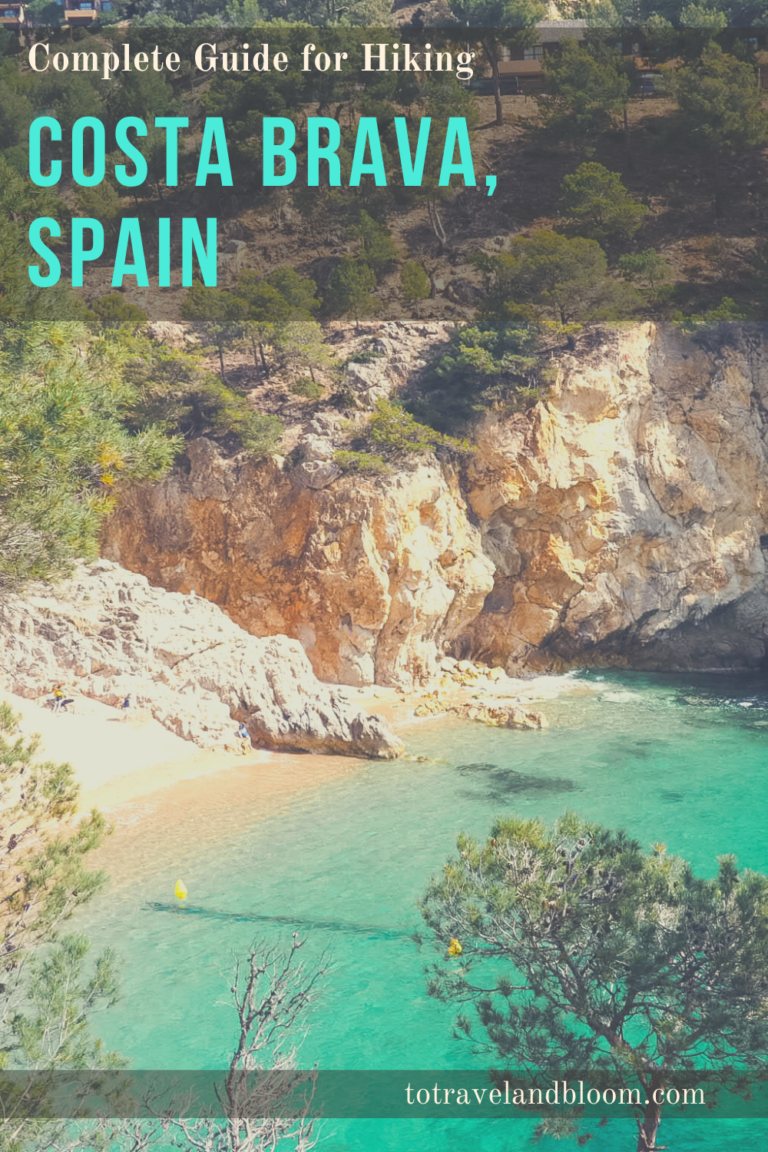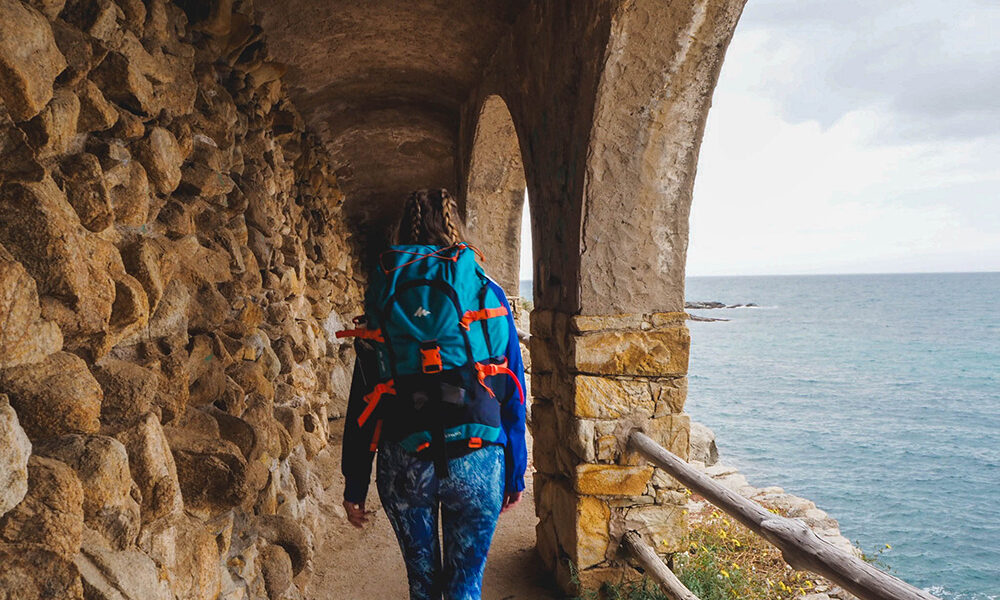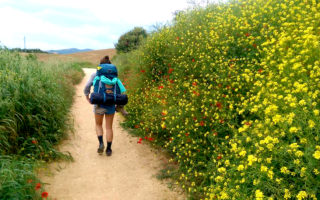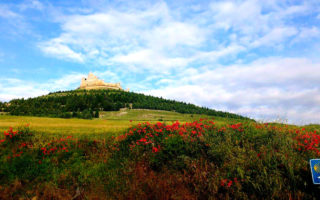Guest writer Christa Adams is a travel writer and passionate adventurer living in Barcelona. She often spends her time frolicking through Scottish forests, visiting hidden gems in Morocco, and sipping flat whites in cosy cafes. Follow her adventures at The Spirited Explorer.
One of Spain’s most spectacular areas, Costa Brava is full of scenic trails along the Mediterranean, mesmerizing secret beaches, and colorful fishing villages. It’s a must-hike destination for any curious adventurist out there.
Here’s a complete mini guide for hiking Costa Brava on the Camino de Ronda (Costa Brava Way).
Why hike Costa Brava?
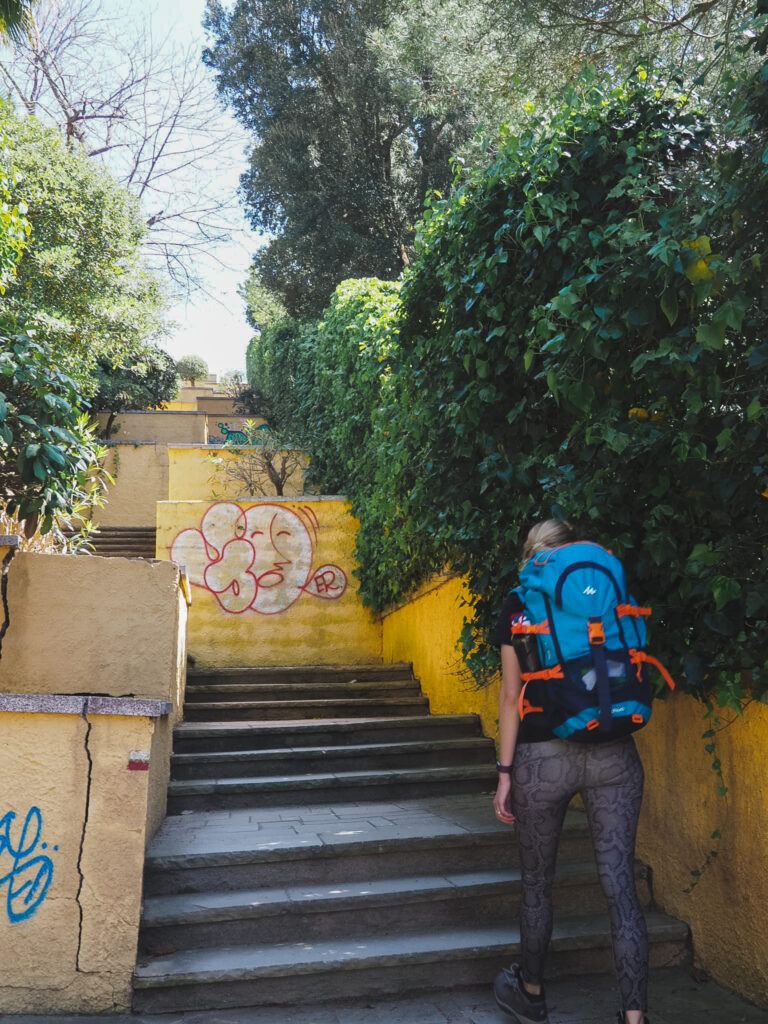
Where are Costa Brava’s hiking trails?
How long does it take to hike through Costa Brava?
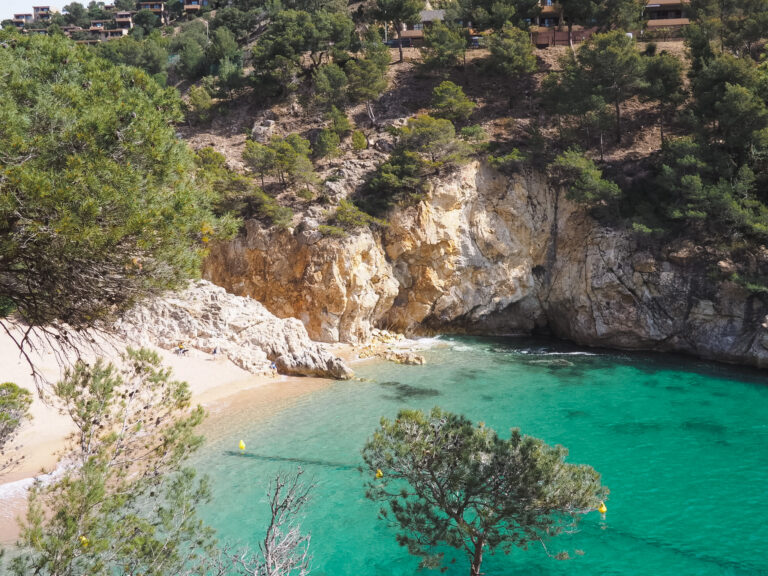
When is the best time to hike?
Spring Break “Semana Santa” is a great time to hike the Costa Brava Way because the weather won’t be unbearably hot yet, but keep in mind it may still be too cool to go swimming or book kayaking.
If you’re looking to swim and kayak during your hike, trekking in late May through June or during the month of September are the best months to get the best of both worlds.
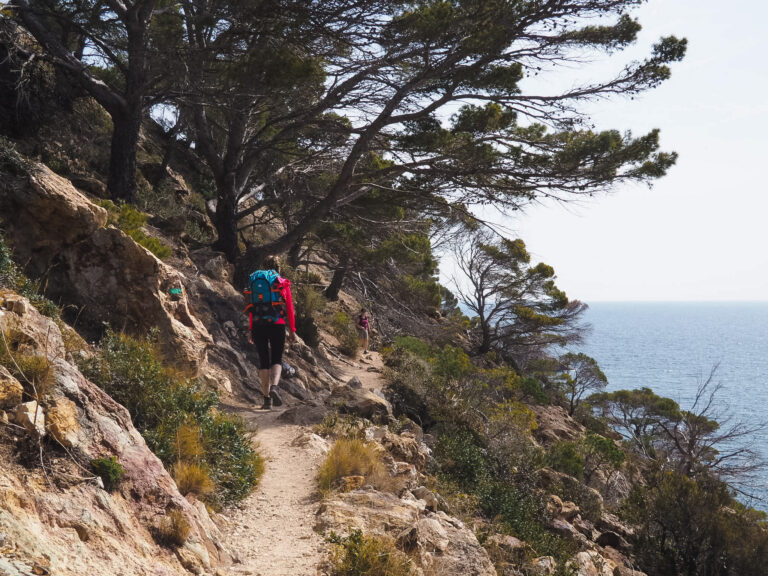
What to pack for a hike through Costa Brava?
- 30-40 L Hiking Backpack: 30-40 L is the perfect size for comfortably trekking through these scenic trails. However, if you plan to camp out instead of staying in hotels, airbnbs, or hostels, then you’ll want 50-60 L to fit a sleeping bag, cooking pot, etc.
- Quality Hiking Shoes: If you’re hiking in the summer months, hike friendly Chacos or Tevas are excellent choices. These could keep your pack lighter as you could get away with wearing these at the beach or walking around the towns, too.
- Reusable Water Bottle: Hydration is important! Tip: there are water fountains once you arrive to each town where you can easily refill your bottle instead of purchasing plastic ones.
- Snacks: Bringing along some snacks and restocking along the way is a great idea. Fruit, nuts, raisins, and simple sandwiches are easy, hike-friendly snacks to keep you fueled and happy along your route.
- Athletic Shorts: I would opt for the ones with built in spandex as this will keep you feeling more comfortable.
- Yoga Leggings: Yoga leggings/pants are perfect for hiking Costa Brava. Choose a relatively thin pair so you don’t feel too hot.
- Long-Sleeve Linen Shirt: Protect yourself from the sun’s strong rays by packing a light linen shirt. You’ll be doing yourself a huge favor because you absolutely don’t want to get a sunburn on day 1 of your hike.
- A Few Athletic tops: Depending on how many days you’re hiking, bring along a few athletic tops that are quick-drying and light. Bonus if they can double as a casual short when wandering the villagers.
- A pair of regular shorts, jeans, or a dress: Go with whatever you feel most comfortable in depending on the time of year and weather. You’ll need this for afternoons or evenings exploring towns like Tossa de Mar and Sant Feliu de Guíxols.
- Hiking Hat: This is for sun protection. You’re going to need it.
- One Pullover Sweatshirt: Some nights can be cool especially if you’re trekking during spring or late September, so bringing a sweatshirt is a good call.
- Sunscreen: If I haven’t mentioned it enough, protect your skin from a nasty sunburn by using SPF 20+ – 50+ and reapplying throughout the day.
- Deodorant and other essentials: If you’re staying in hotels, soap and shampoo are less essential but bring whatever else you need in your daily life.
Where to stay when hiking Costa Brava
It’s common to stay in hotels or bed & breakfasts when doing the Costa Brava Way. However, there are several campsites and eco lodges along the way that you can check out here. But keep in mind you may need tent equipment for some campsites.
There’s no wrong choice when choosing to stay in hotels or campsites. It’s entirely up to you, but if you’re looking for the full nature experience, campsites and lodges are probably what you’ll want to choose.
Enjoy hiking this beautiful route and enjoying views of the Mediterranean and some of Catalonia’s most inviting villages!
